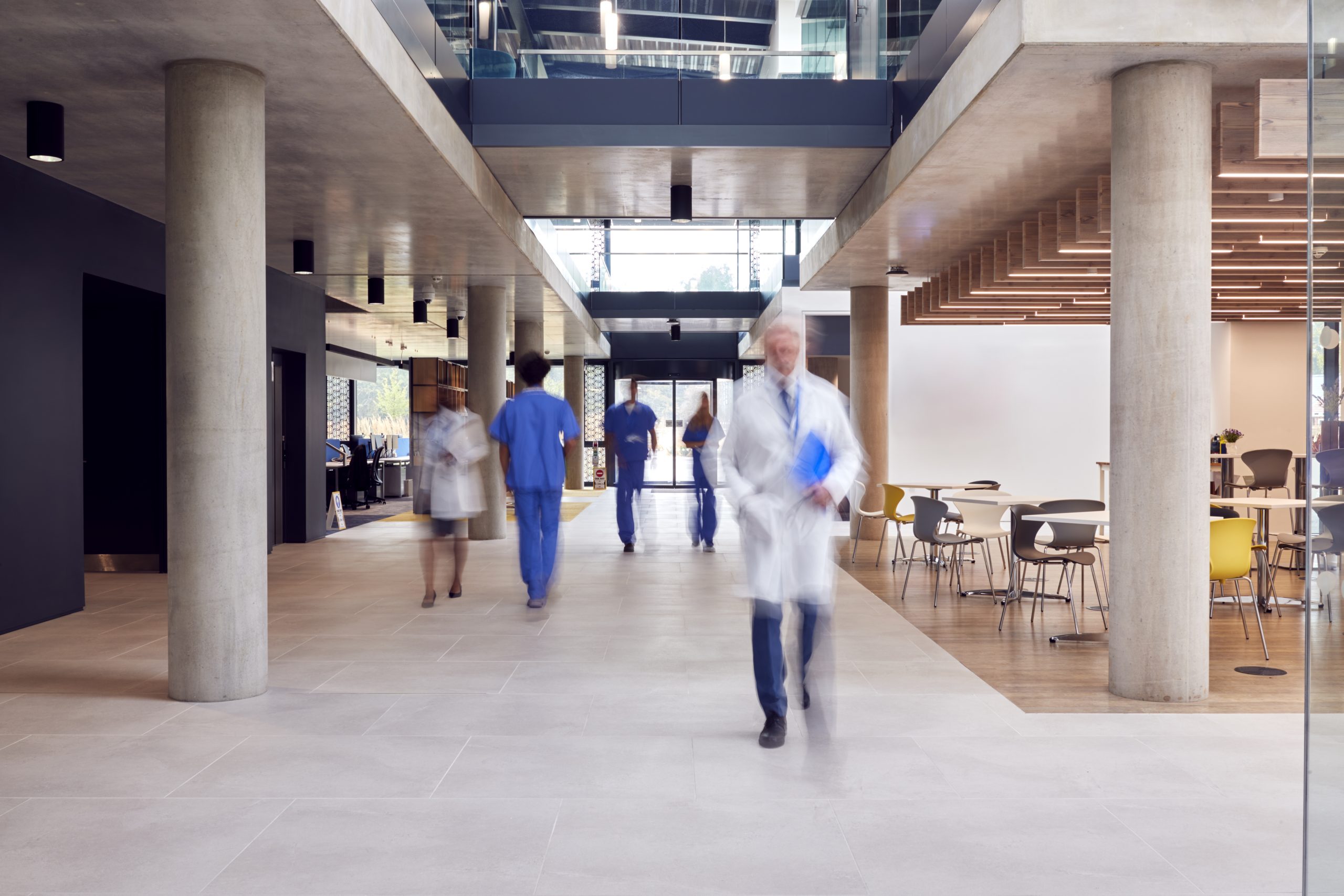Innovative hospital design is central to modern healthcare. When designing hospitals, architects, designers and contractors are now focused on patient-centred care and wellbeing, balanced with the needs of healthcare professionals.
A white paper published by hospital estates and design consultants, Health Spaces, affirms the pivotal role that healthcare architecture plays in “creating exceptional patient experiences, enhancing operational efficiency, and ensuring the wellbeing of both patients and staff.”
Patient experience data is now being used globally to measure the quality of healthcare in hospitals due to its direct impact on patient safety and clinical effectiveness.
Patient satisfaction: the current state of play
The Quality Care Commission’s adult hospital inpatient survey of 2023 found that patient experience had deteriorated since 2020. Just 51% of respondents rated their overall experience as a 9 or 10, where 10 is a very good experience. Construction design innovation is increasingly seen as key to bringing about change. A growing, ageing population and rising mental health needs are additional challenges that wellness design must address.
Let’s explore some key areas where innovative construction design is improving wellness in hospitals.
Natural light and patient recovery
Maximising natural light in hospital design has been found to be critical for patient recovery. A research paper published by the Loughborough University Institutional Repository on the therapeutic impact of daylight refers to a study that identified light as a nutrient for the body. Further evidence cited in the paper suggests that light directly stimulates and regulates the nervous system and endocrine system.
The quality and quantity of light were also found to impact the human body and essential circadian rhythms (natural body clock): “By maintaining the body’s circadian system, daylight impacts outcomes in healthcare settings by reducing depression among patients, improving sleep, lessening agitation etc. The psychological benefits from daylight may catalyse clinical recovery of patients.”
For the new Royal Liverpool Hospital, the key design criteria for HKS Architects was to provide maximum levels of daylight through design elements that included large windows and skylights and interior courtyards: “Large interior courtyards allow natural light to penetrate deep into the building, providing daylight, seasonal colour and calming views throughout the hospital.” All patient rooms were given access to natural light, with half offering views across the city.
Similarly, as part of its Urgent and Emergency Care Upgrade Programme, Arrowe Park Hospital, Wirral was designed to maximise natural light. The project also tapped into on-site renewable energy sources and low/zero carbon technologies to create a sustainable building with reduced energy consumption and lower operational costs.
Incorporating green spaces in hospitals to promote wellness
Biophilic design, the concept of bringing the outside into buildings using plants and design features such as living walls, green roofs and natural materials to satisfy our genetic affinity with nature, has long been associated with enhancing wellbeing.
Green spaces in hospitals give patients their much-needed connection with nature which improves mental health and expedites recovery.
Recent academic research has cited various case studies that support this. Collectively, they produced the following findings:
- Just looking at greenery and nature reduced hospitalisation time by 8%
- A view of a park and trees from a hospital window when recovering from surgery influenced the speed of recovery
- The efficient placement of windows to incorporate views of the outside in every space of a healthcare building reduced isolation
- Patients exposed to more intense sunlight experienced less perceived stress, complained of less pain and took 22% fewer painkiller medications per hour, which consequently reduced medication costs for the healthcare facility.
Healing and therapeutic gardens in the study were found to diminish the sterile environment of the hospital and allow patients to recuperate from stress.
Atriums, green walls and green roofs were also typical ways for hospital design to incorporate nature, alongside simple green common spaces. The sustainability design features of the new Royal Liverpool Hospital include green roofs and the interior courtyards mentioned above.
The benefits of green spaces in hospitals instigated the formation of The NHS Forest project; an alliance of health sites transforming green spaces for health, wellbeing and biodiversity, which began in 2009.
NHS Forest green spaces include peaceful gardens for healing, woodlands, orchards, wildflower meadows, nature-based play spaces for children, outdoor rehabilitation facilities and art trails.
Efficient layouts for enhanced patient and staff experiences
Efficient hospital layouts reduce staff fatigue and improve communication and patient care. A thesis on the effects of spatial layouts in healthcare facilities on staff communication found, for example, that corridors are key areas where nurses spend much of their time.
The design and layout of corridors diminished nurses’ communication, interaction and active learning as well as safe and easy access to different areas. The study suggests that corridors are used beyond their intended function so there should be specific areas within a unit that only medical staff use to reduce stress and improve communications and productivity.
Hospital staff benefit from efficient layouts that facilitate shorter walking distances, and have centralised nurse stations and alternative spaces to corridors.
The thesis identifies the importance of designing flexible spaces to adapt to changing healthcare needs, with the agility to respond to emerging technologies and medical advancements.
Flexible design allows teams to embrace change, and effectively optimise the use of medical spaces, to provide improved patient care. Modern construction techniques, such as modular building, are now central to flexible design that enhances patient and staff experiences while allowing for quicker and more cost-effective hospital expansions.
